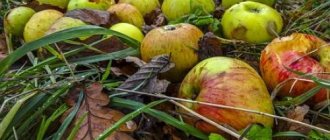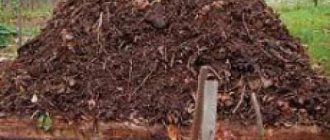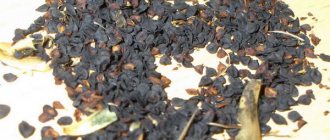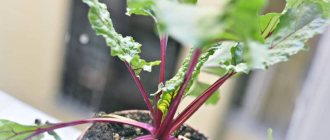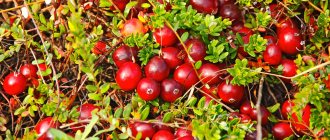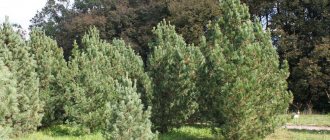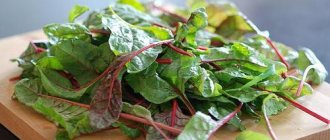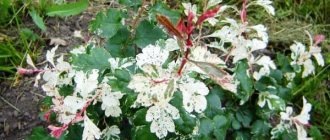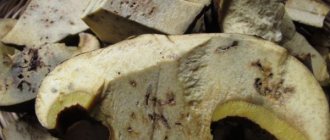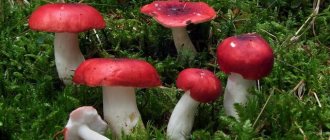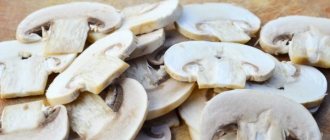2 weeks before digging up potato tubers, gardeners resort to mowing green tops. This part can carry a dangerous disease for the crop - late blight. It is not easy to remove it later.
But if the potatoes have not been infected, then the tops can be used as a useful fertilizer in the garden. This step will save on expensive fertilizers and increase productivity.
What you can and cannot add to compost
It would seem that making compost is simple: just put food and garden waste in a pile and wait until it rots.
As a result of natural overheating, compost will be obtained. But there are some subtleties that should be taken into account when preparing this natural fertilizer .
Not everything is allowed to be added to a compost heap or pit . Some waste will not rot, but will contaminate the soil or attract rodents.
What can you put in compost?:
- cut grass;
- weeds without aggressive roots and ripe seeds;
- fallen leaves;
- bird droppings and manure of herbivorous domestic animals;
- peat;
- mushrooms;
- tea leaves and coffee grounds;
- eggshells – they contain natural calcium;
- leftover raw vegetables and fruits;
- thin branches;
- paper (napkins, paper towels);
- small chips, tree bark, sawdust, seed husks, straw.
Most household waste is not suitable for composting, as it is not a cesspool. All components must be properly rotted and recycled.
Can not use:
- diseased plants;
- citrus peel;
- spoiled bread - it will spread mold;
- leftover fatty meats;
- fish and chicken bones;
- fruits with large seeds;
- perennial seeded weeds with roots;
- synthetic fabrics.
In order for the processed mixture to be useful for all plants on the site, the summer resident will need a serious approach to the selection of ingredients and to the planting process.
Requirements for good compost
When applied to the soil, compost prepared according to all the rules improves its structure and increases fertility .
Each gardener makes it according to his own recipe (there are many options). Various ingredients and additives are used, prepared anaerobically or aerobically , collected in heaps, placed in pits, trenches or in special boxes and closed containers.
The main thing is that the resulting mature compost mass should be moist, crumbly, have a dark color and a pleasant smell of damp forest soil.
Fertilizers to combat tops
If the tops begin to grow, the feeding of the vegetable crop should be adjusted.
Superphosphate
Most often, superphosphate is used to combat potato tops. The application of this fertilizer will not get rid of the grown greenery, but it will activate the development of potato root crops and maintain the quantitative indicators of the harvest.
The addition of superphosphate during the period of active growth of potato tops starts the process of tuberization and ensures the outflow of nutrients from the foliage to the tubers.
To prepare a working solution with superphosphate, 100 g of the main ingredient is required, dissolved in a 10-liter bucket of water. The resulting nutrient liquid is watered over the potato bushes. This amount is enough for 1 hundred square meters of planting area.
As a measure to combat a decrease in potato yield due to excessive growth of potato tops, foliar feeding is often used. Foliar feeding is characterized by higher rates of nutrient absorption, which leads to an acceleration of the tuberization process.
Limiting soil fertilization
Excess fertilizer will cause tops to grow
Nitrogen fertilizers are not applied if the planting areas were fertilized with manure or humus in the fall during harvesting or in the spring before planting.
To prevent the growth of potato greens, fertilizing with nutrients is limited. Among them:
- potassium,
- iron,
- phosphorus,
- magnesium.
Limiting the amount of plant nutrition when growing potatoes is also important because even in the case of large tubers grown with a rich and high potato green part, such a crop, oversaturated with fertilizers, is poorly stored.
Potato tops in compost
Summer residents do not have a clear opinion on whether it is possible to add potato tops to compost.
Most often, closer to autumn, an insidious disease appears on potato leaves - late blight. Along with the tops, pathogenic fungi can be introduced into the compost. Despite the fact that when rotting inside the heap the temperature reaches +60...+80°C, this is not enough to destroy them.
To avoid infecting future plantings, tops laid in compost are watered with a 3% solution of copper sulfate , and then covered with a layer of earth on top. It is used only in the third year after planting, when all fungal spores die.
Is it possible to add
Healthy fresh tops can and should be used for composting . If you suspect that the plant has been infected, it is better to burn it and then pour it into the compost heap in the form of ash.
A few weeks before harvesting, the tops are mowed and placed in compost heaps , sprinkled with copper sulfate to get rid of possible diseases. For disinfection, you can also use a biological preparation based on the soil fungi Trichoderma, which fights the main diseases of garden crops.
Efficiency, benefit and harm
Potato tops can be used in the form of compost to feed any type of cultivated plants . The increased content of soil bacteria, which after application will continue to work in the soil, makes such compost a valuable fertilizer.
It attracts earthworms, which can be called humic acid producers . By eating plant debris, they release coprolites into the soil - fermented substances that are absorbed by plants better than mineral fertilizers.
Attention! Unfortunately, the tops rarely remain completely healthy by the time of harvesting. Untreated diseased plants can cause damage and make the compost a source of contamination.
Burning
If there was late blight on the potatoes, then it is better to burn the tops. But you shouldn’t think that after this all the beneficial substances will burn along with the pests. On the contrary, the necessary microelements (phosphorus, calcium, potassium, etc.) will be preserved in the ash.
The dry residue has no expiration date; it is used at any time needed. During the entire period of crop maturation, fertilizing can be applied under the bushes.
Prepare a barrel of rainwater, into which the burnt remains of the tops are added and stirred thoroughly. Watering is carried out before the ripened crops are harvested. This will make the fruits bigger and tastier.
The most juicy and fortified fruits, vegetables, berries, and root vegetables grow on fertilized soils. Crops tolerate sudden changes in weather conditions and attacks from pathogens. And pests are repelled by the unpleasant smell and bitter taste.
How to make compost from potato tops
Compost from potato tops is an organic fertilizer obtained by its decomposition under the influence of the vital activity of microorganisms . It is prepared in the same way as from any other plant material.
Classic and fast way
The principle of preparing compost in a hole, heap or box is the same . Let's consider the classic method - composting in a heap.
For its formation, a shady area of the garden is allocated, remote from the residential building.
Formed in stages:
- A 20-30 cm layer of peat and a layer of straw or dry leaves are poured onto the compacted earth.
- The tops are placed in the next layer 15-20 cm high.
- Sprinkle a solution of copper sulfate (2 tablespoons per 10 liters of water) on each layer of tops. This way the compost will be safe as a fertilizer.
- A layer of carbon-containing components is placed on top of the tops - dry leaves, paper, branches, hay.
- Then sprinkle with garden soil to a thickness of 10-15 cm. You can add ash to the soil.
- Lay the components in layers until the height of the pile reaches 1-1.5 m.
- The layers are alternated so that for every three parts of dry matter there is one green. The top layer is soil or straw, to retain released gases and better preserve nutrients.
Complete the preparation of the compost heap with a layer of garden soil . The compost is regularly shoveled and watered in dry weather. The top can be covered with plastic wrap.
Important! If there are no nitrogen-containing components in the compost pit, the fertilization process may take many years.
If you need to speed up the maturation of compost, make smaller piles . The optimal height is up to 1 m in height and width at any length. The speed of ripening depends on the composition, correct ratio and alternation of components. When using special accelerators and aerating the heap, the process lasts one season.
Features of watering compost
If the pile dries out, it prevents the compost from maturing . In this case, it needs to be watered. But over-hydration will only do harm. When it rains, it is better to cover it with film so that the beneficial substances do not wash out.
Application of accelerators
You can speed up the maturation of compost using improvised means that can be found in every home, or purchased EM preparations (containing effective microorganisms) and biodestructors.
The dry yeast solution is poured into the pile, after making small depressions in it . This solution is prepared simply: 1 tbsp. l. yeast per 1 liter of water plus a glass of sugar. The temperature must be above +18°C to activate the proliferation of yeasts that will digest organic matter, accelerating rotting.
Attention! Adding slurry also speeds up compost maturation due to the excess nitrogen. But it is dangerous to use fresh manure. It most likely contains pathogens, helminths, and many seeds of aggressive weeds.
Store-bought EO preparations contain bacteria that help decompose organic matter faster:
- "Tamir" - increases the nutritional value of the finished compost and reduces its ripening period to two to three weeks. For the best effect, the solution is poured into the heap every 20 cm. It is prepared in a ratio of 1:100, approximately 5 liters of solution are needed per 1 m³.
- "BIOTEL-compost" is a safe, effective preparation for processing food and plant waste. A solution is made from the drug, which is poured into a pile. To process a heap with a volume of 1 m³, you will need 50 g of the drug.
- “Baikal EM” – contains strains of beneficial microorganisms for accelerated compost maturation.
- “Shine” - at the stage of laying the heap, it is sprinkled on each layer of organic residues, and then watered. Or they make holes in an already collected pile, fill it with “Shining” and water it with water.
Sometimes, to reduce the cost of preparing fertilizer, in addition to EO preparations, preparations for cleaning septic tanks are used : “Doctor Robik”, “Biosept”, “Septifos” and others.
It can be useful:
Hilling potatoes and how to do it correctly
The best ways to weed potatoes
Is it possible to wash potatoes before storing them?
Plant decomposition factors
Plant residues decompose in stages, forming compost:
- Week 1 – Beginning of decomposition and fermentation. At this time, the temperature inside the heap reaches +60…+70°C.
- 2-3 weeks – heat levels drop significantly. There is active gas formation and fungal growth.
- 4th week – earthworms begin to work. Their activity completes the process of humus formation.
- The decay of plants is complete when all processes have ended and the temperature of the compost heap does not exceed room temperature.
When the mass has become loose and free-flowing , the composition is ready for use.
Reasons for excessive height of potato bushes
The average height of a potato bush of traditional varieties is about 50-60 cm . In cases where the tops exceed these indicators and reach a height of 80 cm or more, this usually negatively affects the yield. This is due to the fact that the plant, instead of feeding root crops, devotes all its energy to the growth of the bush itself.
Several factors can lead to this situation:
- Excess fertilizer . If nitrogen-containing fertilizers are applied excessively to the soil, the bush can grow to a height of up to 1 m. The root system in this case develops slowly, the tubers do not grow and remain small.
- Planting a plant in a shaded area . When planting potatoes in dark places, for example in the shade of trees, the bushes stretch out, tending towards the light. The worse the illumination of the planting area, the higher the tops grow, leaving the roots without the required nutrition. For the most successful potato growing, it is recommended to use well-lit, open soil.
- Large planting material . Too large seed material usually causes active growth of tops, since a large root crop initially contains more nutrients than a small one. And the bush grows, not allowing the root system to develop. Young tubers are formed after the planting root crop has been depleted during the pre-harvest period. The result is a small harvest. For planting, it is preferable to use tubers no larger than a chicken egg.
- Excessive watering or heavy rainfall . Potatoes do not like excess moisture. Too frequent watering or excessive rainfall also causes tall bush growth. Excessive soil moisture leads to the growth of tops and crushing of tubers. Moreover, such a crop is poorly stored due to the wateriness of the fruit.
Where else can you use potato tops?
Potato tops are a valuable biological material. Application and disposal can be carried out in several ways: burning, preparing an insecticide, using as mulch.
Burn for fertilizer
Potato growers who don't want to bother with compost can burn the tops. To do this, it is folded outside the garden, dried and set on fire . The remains are collected and used as fertilizer.
Ash from tops is a phosphorus-potassium fertilizer containing other microelements useful for garden and vegetable crops: iron, manganese, molybdenum, boron. It is applied to the soil in the fall.
Use as an insecticide
Potato tops contain a high content of toxic substances - for example, solanine. An insecticidal infusion made from it helps against aphids, cabbage whites, spider mites, fleas and caterpillars. The resulting product will be environmentally friendly; toxic compounds will not be absorbed into fruits and vegetables during decomposition. Its production is accessible to any gardener.
To prepare the solution you will need 0.6 kg of fresh healthy tops or 0.4 kg of dried:
- Chopped greens are poured into 5 liters of water.
- Leave covered for 4 hours.
- Add 50 g of laundry soap to the strained solution.
Plants are treated in the evening, in calm, dry weather , once every 2-10 days, depending on the number of pests.
Place under fruit bushes and trees
Potato tops are laid in a thick layer (6-10 cm) in tree trunk circles , retreating 0.5 m from the trunk. This natural shelter will protect the tree’s root system from frost in winter, and in spring, semi-decomposed mulch from the tops will help quickly warm up the soil.
In addition, the tops prevent weeds from growing and repel pests , and after rotting, fertilizer is obtained. Potatoes do not have any common diseases with apple, plum and cherry trees. It is also used for mulching berry bushes: raspberries, currants, gooseberries.
Mulch
Fruit trees and shrubs need to be prepared for winter in the fall. The beds are dug up, with the addition of insecticides, to prevent the development of insects in the soil and to prevent infection of trees in the spring.
Along with insecticides, fungicides are added, most often ash, so that fungus does not develop in the soil. To increase soil fertility, add rotted compost. Straw or dry grass is placed in the garden bed as insulation. This is especially true if the region has frosty winters.
View this post on Instagram
Posted by Olga Lavrova (@olgalavrova2304) Sep 3, 2021 at 3:27 PDT
Potato tops can be used instead of fungicides, insecticides and mulch. It is laid around the trunk. It will insulate the roots well, and thanks to its toxic substances, it will be a good remedy for insects and fungal infections.
Potato tops are used for trees, shrubs, grapes, and flower beds.
More on the topic: How are Colette potatoes grown?
Is it possible to put rotten potatoes in compost?
Rotten foods, including potatoes, are safe to compost . They decompose well and become a nutritious fertilizer.
Raw potatoes
If the tubers have not been treated with herbicides and pesticides, then you can put them in compost . If properly composted, they will quickly rot, especially if they are crushed or at least cut in half.
Important! The peculiarity of raw potatoes is that they can germinate in the nutrient medium of a compost heap. Pull out these bushes immediately, as there will be no harvest there.
Why mow and when to do it?
Immediately after flowering
The peak of tuber growth activity occurs during the period of flower bud ripening. Immediately after flowering, the root crops, having accumulated the necessary substances, begin to grow actively. However, the skin of young tubers remains quite thin. If you mow the tops at this time, the growth of the potatoes will stop, and the peel will become denser and coarser .
We invite you to watch a video about mowing potato tops after flowering:
Just before harvest
In order to get the best harvest, you should start harvesting it by first removing the tops . The potato skin becomes rough in just a few days, after which it is ready for digging. The soil between the rows, devoid of spreading bushes, dries out much faster and the tubers are collected already clean, without the need for additional drying before being sent for winter storage.
The best time to remove excess vegetation is after flowering has finished, about 10-12 days before harvest.
Tips and tricks
Old, dried potato tops are an excellent food for soil fungi , which convert them into humus and serve as the basis of the food chain in the formation of a stable soil ecosystem.
The best place for potato tops is the far corners of the garden . Place the tops there every year for several years in a row. Don't stir, don't make a regular compost pile, don't add kitchen scraps to it.
After 3 years, the lower layers in this pile will turn into fertile soil that is healing for the roots . When added to planting holes, it suppresses harmful fungi and diseases, protects the roots of fruit bushes and perfectly nourishes them. Especially recommended for currants.
Removing tops
If it is not possible to determine what exactly is the reason for the active growth of potato greens, the tops are bent. This makes it possible to stop its growth for a period of about 2 weeks and start the tuberization process.
Removal of greenery is carried out in one of 2 ways:
- Mechanical. As a result, the green part of the potato bush remains at least 25 cm high. This is enough to fully absorb chemicals during processing. The mechanical method of tearing off the green part is done using a topper and is not used for low bushes.
- Chemical. It is often used as an addition to the mechanical one a day after the last one. For greater efficiency, chemical treatment is carried out twice. With the first, the upper part of the stem is destroyed, with the second, the effect of the chemicals is consolidated.
Both methods of removing potato greens are carried out 7 days before mowing.
Making quick compost
Very often there is a need to obtain fertilizers over several months. For this purpose, the rapid composting method can be used. To do this, you need to use a special box or compost pit. In this case, it is not advisable to use a compost heap, since the rotting process in it is quite long.
How to make quick compost
You can place branches, leaves or dry straw at the bottom of the hole or box. The next layer is the above-ground part of the potato. To obtain the highest possible efficiency when applying fertilizers, it is necessary to use this component in its green form. Otherwise, the process of rotting components will be significantly delayed.
The pit should be laid in the warm season. Thanks to high temperatures, the decomposition process of its components will be significantly accelerated. In order to speed up the process of decomposition of the above-ground parts of potatoes and other waste, it is necessary to water them with special fertilizers, which are purchased at a specialized store. Also, to speed up the decay process, the components of the pit are constantly mixed. The fastest decomposition is observed at high temperatures, which is why the compost pit is always covered with an opaque plastic film.
What pests are water extracts from potato tops effective against?
The fresh green mass of such plants does not have a clear detrimental effect on arthropods that infect various plantings in the garden plot. To destroy pests, you need to prepare a working solution. It exhibits insecticidal and acaricidal properties, which means it can have a negative effect on insects and mites.
To combat parasites of these classes, special means are used. There are universal methods of controlling pests. This is an extract from the green mass of a potato bush. The poisonous effect upon contact of insects and ticks with such a product is ensured due to the composition of the tops. It contains the poison solanine and other toxic substances. To prevent the spread of diseases, we use uncontaminated raw materials.
The product is used against the following pests:
- aphid;
- whitefish;
- flea beetles;
- mole;
- spider mites (all types);
- scoop, etc.
Most pests fly, others crawl. It is difficult to destroy certain types of insects in their natural habitats: you need to catch parasites and look for representatives of each species. For this reason, it is recommended to treat their food source - plants, which simplifies the destruction process.
All garden pests are attracted to the site in order to obtain the cellular fluid of green spaces. When topsoil extract is applied to leaves and stems, insects come into contact with it. In this case, the poison ends up on their outer covers and enters the body along with food.
When to dig up potatoes after the tops dry out
In August - September, after the tops dry out, the potatoes stop growing, nutrients accumulate in the tubers, and a thick, durable peel is formed.
The tubers become suitable for long-term storage.
This is interesting:
How to properly trim the tops of potatoes and why it is necessary
Types of potato diggers for mini-tractors, operating principles and selection criteria
Life hacks from experienced farmers: why pick flowers from potatoes and what does it give?
Accelerated preparation of fertilizer
In order for the recharge from the above-ground part of the potato to be prepared in the shortest possible time, nitrogen is added to it in the required amount. That is why when laying a compost heap, it is necessary to ensure that it contains a sufficient amount of manure. That is why, when using the above-ground part of potatoes, it is necessary to take into account that the rate of adding manure to it should be at least a fifth. In order to heat the heap as efficiently as possible, bird droppings or horse manure can be used.
The green above-ground part of potatoes is an excellent organic fertilizer for a variety of plants. To obtain fertilizer, compost is laid. This method is characterized not only by high efficiency, but also low cost.
Making compost
Today there are a huge number of recipes for preparing fertilizers. Natural substrates can be prepared. In order to compensate for the lack of various chemical elements in the fertilizer, mineral additives are used.
Potato tops are characterized by the presence in their composition of:
- Phosphorus;
- Potassium;
- Nitrogen.
That is why it can be used to prepare high-quality fertilizer. In order for feeding to bring maximum effect, it is necessary to correctly observe the proportions when preparing compost. Depending on what additives are used to fill the compost pit, the effectiveness of replenishment is determined.
Mowing the tops
You can increase the yield of a vegetable crop if the potato top has begun to actively grow by mowing it. The event is carried out at the end of the flower development stage. There are many advantages to mowing greenery:
- stimulating the development of tubers,
- improving the quality characteristics of the crop,
- drying out furrows
- lowering the barrier to plant infection by diseases whose pathogens prefer to settle on potatoes,
- increasing the shelf life of the crop,
- simplifying potato harvesting.
It is recommended to mow potato greens 2 weeks before the expected potato harvest. In other cases, it is mowed earlier, but always after the potatoes have sprouted and the flowers have faded, at the end of the flowering stage.
Potato flowering period and its features
Potato flowering begins 45-60 days after planting. This is an important stage in the development of the plant. But sometimes it refuses to fully bloom, which foreshadows the possible drying of the tops.
The reasons are different:
- Peduncles were destroyed by pests.
- Planting was done incorrectly - ungerminated, poor-quality tubers infected with diseases or pests were placed in unheated soil.
- There are not enough nutrients in the soil.
- Hot and dry weather is not suitable for flowering.
- The plant does not bloom due to improper care.
